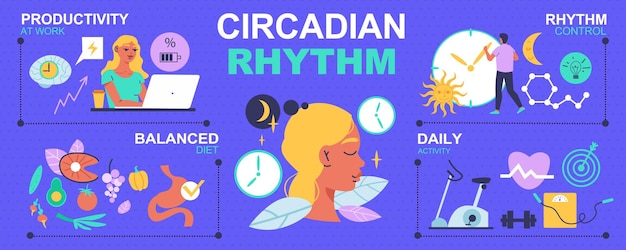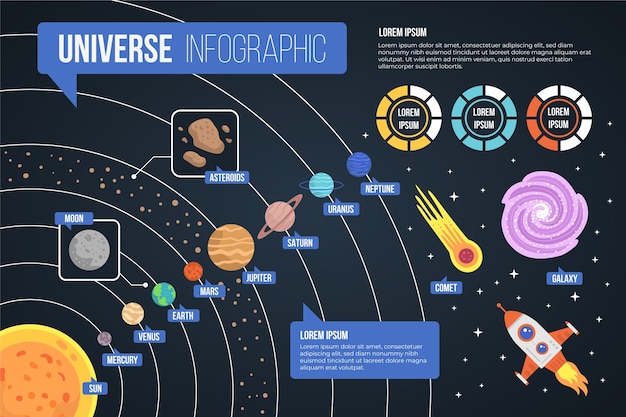Fascinating Facts About the Hammerhead Shark
The hammerhead shark, with its distinctive head shape, is easily recognizable in the underwater world.
Hammerhead sharks belong to the family Sphyrnidae and are found in warm waters around the world.
Did you know that hammerhead sharks have excellent vision thanks to their unique head shape?
Hammerhead sharks have a wide range of prey, including fish, rays, and even smaller sharks.
These incredible creatures can grow up to 20 feet in length, making them one of the largest shark species.
Hammerhead sharks are known for their complex social behaviors, often forming schools with other individuals.
Unlike many other shark species, hammerheads are not known to attack humans unless provoked.
Hammerhead sharks have an incredible sense of smell, which helps them locate prey from miles away.
Hammerhead sharks have been known to migrate long distances, sometimes traveling thousands of miles.
One interesting fact about hammerhead sharks is that they have a higher tolerance for low-oxygen environments compared to other sharks.
Hammerhead sharks are among the few species that can see in color, giving them an advantage in hunting.
Did you know that hammerhead sharks have a unique hunting technique called hammering, where they use their head to pin down prey?
Hammerhead sharks are known for their excellent maneuverability in the water, thanks to their flattened heads.
Hammerhead sharks have specialized sensors in their heads that help them detect electrical signals emitted by prey.
Hammerhead sharks have a long lifespan, with some individuals living up to 40 years in the wild.
The hammerhead shark’s distinct head shape helps to increase their agility and improve their ability to locate prey.
Hammerhead sharks have a unique mating behavior, where the male clasps onto the female’s pectoral fin during reproductive activities.
Hammerhead sharks are not only skilled hunters but also play an important role in maintaining the balance of marine ecosystems.
Hammerhead sharks are known to exhibit strong site fidelity, often returning to the same feeding and mating sites each year.
Hammerhead sharks have a keen sense of direction, using the Earth’s magnetic field to navigate.
Hammerhead sharks have multiple rows of sharp teeth, perfectly adapted for tearing apart their prey.
The hammerhead shark’s head acts as a hydrofoil, allowing them to swim efficiently through the water.
Contrary to their fierce appearance, hammerhead sharks are generally calm and non-aggressive, unless provoked.
Hammerhead sharks have a highly developed sense of hearing, which helps them detect prey even in murky waters.
Did you know that some species of hammerhead sharks can reproduce both sexually and asexually?
Hammerhead sharks have an incredible ability to regenerate damaged or lost teeth.
Hammerhead sharks play a crucial role in balancing the marine food chain by controlling the populations of their prey.
Hammerhead sharks have a unique navigation system called chemotaxis, where they follow scent trails to locate food.
Hammerhead sharks’ wide-set eyes enable them to have better depth perception, enhancing their hunting skills.
Hammerhead sharks are highly adaptable to different environments, which is why they can be found in both coastal and open ocean waters.
Hammerhead sharks have a relatively low reproductive rate, making them vulnerable to population decline.
One interesting fact about hammerhead sharks is that they can leap out of the water, sometimes reaching heights of several feet.
Hammerhead sharks have a specialized organ called the ampullae of Lorenzini, which helps them detect the electrical fields of their prey.
Hammerhead sharks are known to engage in complex courtship rituals, including elaborate displays and physical interactions.
Hammerhead sharks are one of the few shark species that give birth to live young, rather than laying eggs.
Hammerhead sharks have a strong sense of social hierarchy within their schools, often led by the largest and most dominant individuals.
Hammerhead sharks have a unique circulatory system that helps regulate their body temperature and maintain an optimal swimming performance.
Some hammerhead shark species are known to undertake long-distance migrations, traveling across ocean basins to reach their desired destinations.
Hammerhead sharks have a slender body shape, allowing them to swim swiftly and silently through the water.
The hammerhead shark’s hammer is actually an extension of its skull, providing extra visual range and sensory capabilities.
Hammerhead sharks have been studied for their potential medicinal uses, as their organs contain compounds that may have healing properties.
Hammerhead sharks have a preference for warm water, often found in tropical and subtropical regions.
Hammerhead sharks have a strong sense of social bonding within their schools, often exhibiting cooperative hunting behaviors.
Hammerhead sharks have a unique ability to change their coloration, helping them blend into their surroundings and avoid predators.
Hammerhead sharks have faced significant threats from overfishing and habitat loss, highlighting the importance of conservation efforts to protect these magnificent creatures.
Interesting Facts about Guinea Pigs
Guinea pigs were domesticated over 3,000 years ago in South America.
The scientific name for guinea pigs is Cavia porcellus.
Guinea pigs belong to the rodent family.
They are not actually from Guinea, but they are believed to have been named after the country due to their high price in the European market.
Guinea pigs have an average lifespan of 4-8 years.
They are social animals and should not be kept alone.
Guinea pigs have excellent hearing and can detect high-pitched sounds.
They communicate through a variety of vocalizations including squeaking, purring, and growling.
Guinea pigs have poor eyesight and rely on their sense of smell to navigate.
One of the interesting facts about guinea pigs is that they have 20 teeth.
Like humans, guinea pigs cannot produce their own vitamin C and require it in their diet.
Guinea pigs have a unique digestive system where they produce soft, sticky feces called cecotropes that they consume for additional nutrients.
As herbivores, their diet consists mainly of fresh hay, vegetables, and fruits.
Guinea pigs have been used as laboratory animals for medical research due to their similarities to human anatomy and physiology.
These small animals are excellent parents and show great care and affection towards their young.
Guinea pigs are naturally clean animals and spend a significant portion of their day grooming themselves.
They have a strong sense of smell and use it to mark their territory and identify their own.
Guinea pigs have a variety of coat colors and patterns, including solid, tortoiseshell, tri-colored, and more.
Their soft fur is used for making textiles in some countries.
Guinea pigs have 4 toes on their front feet and 3 toes on their back feet.
They are good swimmers and can even be trained to swim in shallow water.
Guinea pigs have a high reproductive rate and can give birth to 4-6 pups in a single litter.
Contrary to their name, guinea pigs are not pigs and they are not related to them.
They are crepuscular animals, which means they are most active during dawn and dusk.
Their hearing range is between 54-50,000 Hz, much higher than humans.
Guinea pigs are known for their lively and friendly personalities.
They have a strong sense of hierarchy within their social groups.
Guinea pigs have sweat glands on their feet that help cool them down in hot weather.
They have an average body temperature of 101-104°F.
Guinea pigs have a unique method of showing affection called popcorning, where they jump and twist in the air.
They enjoy being petted and will often purr when being stroked.
Guinea pigs have a lifespan of scent memory and can recognize familiar scents even after months or years.
They are susceptible to obesity and should have controlled diets to prevent health issues.
Guinea pigs can be litter trained, making them easier to care for.
They have a 340-degree field of vision, enabling them to see in almost all directions without moving their heads.
Guinea pigs have scent glands near their anuses that they use for territorial marking.
They are prone to dental problems, and their teeth continuously grow throughout their lives.
Guinea pigs are coprophagic, meaning they eat their own feces for nutritional benefit.
They have a natural instinct to hide when they feel threatened, making them easy to handle.
Guinea pigs are popular pets because of their gentle nature and low maintenance.
They are susceptible to respiratory infections, and their cages should always be kept clean.
Guinea pigs are often used as therapy animals due to their calming effect on humans.
They have a complex vocal repertoire and can communicate their needs and emotions effectively.
Guinea pigs are known for being curious and will explore their environment if given the opportunity.
These adorable creatures are often used in educational settings to teach children about responsibility and empathy.
Fascinating Facts about Gravity
Gravity is what keeps us grounded on Earth.
Without gravity, everything would float away into space.
Astronauts experience a decrease in bone density due to prolonged exposure to microgravity.
The force of gravity is stronger on objects with greater mass.
The force of gravity weakens as you move further away from the center of the Earth.
Gravitational forces between objects are proportional to their masses and inversely proportional to the square of the distance between them.
Newton’s apple falling from a tree is a popular storytelling example of gravity.
The concept of gravity was first described by Sir Isaac Newton.
Gravity is what causes objects to fall towards the Earth.
Gravity influences the motion of all objects in the universe.
The moon’s gravity causes ocean tides on Earth.
Gravity keeps planets in orbit around the sun.
Gravity is responsible for the formation of stars and galaxies.
In a vacuum, all objects fall at the same rate regardless of their masses.
The acceleration due to gravity on Earth is approximately 9.8 meters per second squared.
Gravity plays a role in the formation and stability of solar systems.
The concept of escape velocity is tied to gravity – it is the minimum speed an object needs to escape a gravitational field.
Einstein’s theory of general relativity revolutionized our understanding of gravity.
Gravity warps the fabric of space and time according to Einstein’s theory.
Black holes are regions of spacetime with extremely strong gravitational forces.
The force of gravity can be felt on a subatomic level as well.
The gravitational pull of the Earth keeps our atmosphere intact.
Gravity acts as a force that shapes the structure of the universe.
The existence of dark matter is inferred from its gravitational effects on visible matter.
Gravity influences the behavior of light, causing phenomena like gravitational lensing.
The phenomenon of weightlessness experienced in space is due to the absence of gravity’s pull.
The gravitational constant, denoted by G, determines the strength of gravity between objects.
Gravity affects the flow and movement of fluids, such as in rivers and ocean currents.
Objects in freefall are experiencing the force of gravity but without any support from a surface.
Gravity can cause time dilation, where time moves slower in stronger gravitational fields.
Gravity waves are ripples in the fabric of spacetime caused by the acceleration of massive objects.
Gravity allows for the formation and existence of galaxies, stars, and planets.
The equations describing gravity are fundamental in the field of physics.
Gravity can bend the path of light, leading to phenomena like gravitational lensing and the Einstein ring.
The discovery of gravitational waves in 2015 provided direct evidence for the existence of these waves predicted by Einstein’s theory.
Gravity is a force that affects everything in the universe, from the largest galaxies to the smallest particles.
The principle of buoyancy is related to gravity, as objects float in fluids due to the upward force exerted by displacement of the fluid.
Electromagnetism and gravity are the two fundamental forces that govern the behavior of matter in the universe.
Gravity is responsible for the formation and collapse of stars, leading to phenomena like supernovae and black holes.
The mass of an object determines the strength of gravity it exerts and experiences.
Gravity allows planets to maintain stable orbits around the sun and moons around planets.
The pull of gravity on the human body changes as you move from the Earth’s surface to higher altitudes.
The term zero gravity is often used to describe the absence of gravity, although technically it refers to microgravity experienced in space.
Gravity influences the shape and structure of celestial objects, such as the spherical shape of planets.
The study of gravity continues to be an active area of research, with scientists striving to better understand its nature and implications.
Fascinating Facts about Giraffes for Kids
Giraffes are the tallest animals on Earth!
A giraffe’s neck can be as long as six feet!
Giraffes have long tongues that can reach up to 21 inches.
A giraffe’s spots are unique, just like a human’s fingerprint.
Giraffes are herbivores, which means they only eat plants.
Giraffes have ossicones, which are horn-like structures on their heads.
A giraffe’s heart is as big as a basketball.
Giraffes can run up to speeds of 35 miles per hour.
Giraffes only need about 30 minutes of sleep per day.
A giraffe’s long legs help them run fast and kick predators if needed.
Female giraffes give birth standing up, so their babies fall about six feet to the ground!
Giraffes have a fantastic sense of hearing and can hear frequencies as low as 14 hertz.
A giraffe’s tongue is dark blue to protect it from the sun.
Giraffes have seven vertebrae in their necks, just like humans.
A giraffe can clean its ears with its super long tongue.
Giraffes have a prehensile upper lip, which helps them grab leaves and food.
A baby giraffe can stand within an hour of being born.
A giraffe’s neck has the same number of bones as a human’s neck – seven.
Giraffes have extraordinary eyesight and can spot predators from far away.
A giraffe’s height is mainly due to its long neck and long legs.
Giraffes have a special valve in their necks that prevents blood from rushing to their heads when they bend down to drink water.
The pattern of a giraffe’s spots helps them blend in with their environment.
Giraffes can eat up to 75 pounds of food per day.
Giraffes have a purple-colored tongue.
Giraffes can kick predators like lions with enough strength to seriously injure or kill them.
A giraffe’s neck can weigh around 600 pounds!
Giraffes have excellent teamwork skills and can watch out for each other in the wild.
A giraffe’s neck serves as a natural air conditioner, helping them regulate their body temperature.
Giraffes can lick their own eyelids.
A giraffe’s spots darken with age.
In one step, a giraffe can cover up to 15 feet of ground.
Giraffes rarely make any sound, but when a mother calls her calf, it sounds like a flute.
Giraffes have a gestation period (pregnancy) of 15 months.
A group of giraffes is called a tower.
Giraffes have a four-chambered stomach to help them digest their food.
A giraffe’s coat color helps them camouflage with the trees and grass in their environment.
Giraffes rely on their excellent eyesight to detect danger and predators.
A giraffe can live up to 25 years in the wild and even longer in captivity.
Giraffes have a unique way of greeting each other by rubbing their necks together.
A giraffe’s neck can grow up to six feet long!
Giraffes have large, round, and expressive eyes.
Giraffes are social animals and often gather in groups.
A giraffe can eat leaves from trees that are as high as 19 feet!
Giraffes have a complex and intricate network of blood vessels in their necks to ensure proper circulation.
Giraffes have a great sense of balance, which helps them walk and run stably even at high speeds.
Facts about Georgia O’Keeffe
Georgia O’Keeffe was one of the most influential American modernist painters.
She was known for her large-scale paintings of flowers, landscapes, and skyscrapers.
O’Keeffe was born on November 15, 1887, in Sun Prairie, Wisconsin.
She was the second of seven children in her family.
O’Keeffe attended the School of the Art Institute of Chicago and later studied at Columbia University’s Teachers College.
She initially pursued a career in teaching art, but eventually turned to painting full-time.
O’Keeffe gained recognition for her abstracted and highly detailed depictions of flowers.
She famously said, Nobody sees a flower – really – it is so small it takes time – we haven’t time – and to see takes time.
O’Keeffe believed in the power of art to evoke emotions and challenge perceptions.
She often traveled to New Mexico, where she found inspiration in the rugged landscapes and vibrant colors.
O’Keeffe’s paintings were often labeled as feminist, as she depicted female sexuality and embraced her own independence.
She had a close and influential relationship with the photographer Alfred Stieglitz, who became her husband in 19
O’Keeffe’s work was exhibited in numerous solo and group exhibitions throughout her career.
She was the first female artist to have a retrospective at the Museum of Modern Art in New York.
O’Keeffe’s paintings are characterized by bold colors, simplified forms, and strong compositions.
The sky and clouds often featured prominently in her paintings, symbolizing freedom and vastness.
O’Keeffe’s work had a significant impact on American art and inspired generations of artists.
She received the Presidential Medal of Freedom from President Gerald Ford in 1977.
O’Keeffe embraced the natural world and often incorporated natural forms in her paintings.
She spent her later years in New Mexico, where she lived and worked until her death in 1986.
O’Keeffe maintained a rigorous daily painting routine, dedicating herself to her art.
Many of her iconic paintings are displayed in prestigious museums around the world.
O’Keeffe’s work continues to be celebrated for its originality and enduring appeal.
She was a passionate advocate for the preservation of the natural environment.
O’Keeffe’s artistic vision extended beyond the canvas; she also designed some of her own clothing.
She was a pioneer of American modernism, challenging traditional artistic conventions.
O’Keeffe’s paintings often offer viewers a different perspective on familiar subjects.
She believed in the importance of individuality and expressed it through her unique artistic style.
O’Keeffe had a deep connection with the desert landscapes of New Mexico, which is evident in many of her paintings.
She experimented with different techniques, including watercolors, charcoal, and pastels.
O’Keeffe’s paintings often convey a sense of solitude and introspection.
She believed that art should be a reflection of the artist’s inner world.
O’Keeffe refused to conform to artistic stereotypes and remained true to her own creative vision.
Her work encapsulates the spirit of the American West and its vast horizons.
O’Keeffe’s paintings often evoke a sense of mystery and intrigue.
She was fascinated by the shapes and contours of natural objects, often magnifying them in her paintings.
O’Keeffe’s passion for art manifested at an early age, and she was encouraged by her family to pursue it.
Her work continues to inspire artists and enthusiasts alike, transcending time and place.
O’Keeffe’s paintings capture the essence of the changing seasons and the beauty of nature.
She was not limited to a single style or subject matter, constantly evolving and experimenting throughout her career.
O’Keeffe’s commitment to her art allowed her to break barriers and pave the way for future generations of female artists.
She believed in the importance of surrounding oneself with beauty and often incorporated found objects in her artwork.
O’Keeffe’s paintings depict both the grandeur and the intricacies of the natural world.
She was deeply influenced by Japanese art and sought to capture its simplicity and balance in her work.
O’Keeffe’s legacy lives on, with her paintings inspiring a new generation of artists to embrace their unique perspectives.
Interesting Facts about George Washington for Kids
George Washington was the first president of the United States.
He was born on February 22, 1732, in Westmoreland County, Virginia.
Washington became a surveyor at the age of
4. He married Martha Dandridge Custis in 1759.
Washington had false teeth made of hippopotamus ivory.
He was a skilled horseback rider and enjoyed fox hunting.
Washington served as the Commander-in-Chief of the Continental Army during the American Revolutionary War.
He led the army to victory against the British and helped secure independence for the United States.
Washington was known for his strong leadership and strategic military skills.
His famous crossing of the Delaware River helped turn the tide of the war.
After the Revolutionary War, Washington retired from the military and returned to his Virginia plantation, Mount Vernon.
He was unanimously elected as the first President of the United States in 1789.
Washington served two terms as president from 1789 to 1797.
His leadership helped establish many of the customs and traditions of the presidency.
Washington’s Farewell Address is considered an important piece of American history.
He warned against political factions and foreign alliances.
Washington was known for his integrity and honesty, earning him the nickname Father of His Country.
He established the first Cabinet, including positions such as Secretary of State and Secretary of the Treasury.
Washington’s face is featured on the one-dollar bill and the quarter coin.
He was a strong proponent of a strong central government and helped shape the Constitution.
Washington’s leadership and example set a precedent for future presidents.
He was instrumental in the creation of the Bill of Rights, which protects individual freedoms.
Washington was an avid farmer and worked to improve agricultural practices.
He owned a distillery and was one of the largest whiskey producers in America.
Washington established the first national bank in the United States.
He supported a policy of neutrality in foreign affairs.
Washington’s administration negotiated the Jay Treaty with Britain, preventing a war.
He established the federal capital in Washington, D.C.
Washington laid the cornerstone of the United States Capitol Building.
He was a skilled horse breeder and enjoyed horse racing.
Washington’s favorite horse was named Nelson.
He was presented with two mules from the King of Spain.
Washington was a Freemason and served as the Master of his Virginia lodge.
He was an advocate for education and believed in the importance of knowledge for a democratic society.
Washington’s Mount Vernon estate is now a popular tourist attraction.
He was the only president to receive a unanimous electoral vote.
Washington’s personal library at Mount Vernon was one of the largest in the country at the time.
He was known for his impeccable fashion sense and always dressed elegantly.
Washington was the only president to lead troops into battle while in office.
He suffered from various health issues, including dental problems and severe throat infections.
Washington’s strict discipline and adherence to duty earned him the respect of his soldiers and fellow statesmen.
He was an avid reader and enjoyed studying history and philosophy.
Washington oversaw the construction of the Erie Canal, which opened trade routes and helped spur economic growth.
He believed in the importance of a strong military and national defense.
Washington’s legacy as a founding father and the first president of the United States will forever be remembered in American history.
George Washington Carver – Fascinating Facts
George Washington Carver was born into slavery on a farm in Missouri.
Despite being born into slavery, Carver became one of the most influential agricultural scientists in history.
Carver’s most famous invention was peanut butter.
He made more than 300 different products from peanuts, including milk, flour, ink, and soap.
Carver also developed methods to improve soil fertility and combat erosion.
He advocated for crop rotation and planting peanuts as a way to replenish soil.
Carver was the first African American to earn a Bachelor of Science degree.
He later became the first African American faculty member in Iowa State University’s history.
Carver’s experiments with peanuts helped him become known as the Peanut Man.
He was also known as The Wizard of Tuskegee due to his groundbreaking work at Tuskegee Institute.
Carver conducted extensive research on sweet potatoes and developed numerous uses for them.
He discovered that sweet potatoes could be used to create dyes, food products, and even synthetic rubber.
Carver’s work on peanuts and sweet potatoes helped struggling farmers diversify their crops and improve their livelihoods.
He had a deep appreciation for nature and believed in sustainable agricultural practices.
Carver promoted the use of natural pesticides and fungicides instead of harsh chemicals.
He was a prolific inventor, holding patents for his agricultural products and processes.
Carver’s work laid the foundation for modern sustainable farming practices.
He was a strong advocate for racial equality and inspired many African American scientists and inventors.
Carver’s accomplishments earned him numerous awards and honors throughout his lifetime.
He frequently traveled to share his knowledge and promote sustainable farming practices.
Carver’s research helped revitalize the economy in the South by introducing profitable crops.
Despite facing discrimination and racism, Carver remained committed to his work and making a difference.
Carver’s legacy lives on through the George Washington Carver National Monument in Missouri.
He believed that education and knowledge were powerful tools for overcoming adversity.
Carver’s influence extended beyond agriculture, as he was also an artist, musician, and poet.
He was a sought-after speaker and delivered lectures on topics such as botany, chemistry, and agriculture.
Carver was responsible for popularizing the concept of sustainability in agriculture.
His dedication to preserving the environment is evident in his efforts to combat soil erosion.
Carver’s innovative techniques revolutionized farming practices and boosted food production.
He stressed the importance of conserving resources and using them wisely.
Carver’s peanut products were widely embraced by the public and helped alleviate food scarcity during World War I.
He was instrumental in bringing about advancements in agricultural education and research.
Carver’s groundbreaking work paved the way for future scientists to explore the potential of alternative crops.
He valued simplicity and believed that the smallest things could have a big impact.
Carver’s experiments with peanuts and sweet potatoes demonstrated the potential of underutilized crops.
He dedicated his life to improving the conditions of farmers and creating sustainable agricultural systems.
Carver’s achievements challenged societal norms and paved the way for racial integration in academia.
He refused to accept payment for his work, believing that knowledge should be freely shared for the greater good.
Carver’s ideas on sustainable farming are still relevant and influential in today’s world.
He encouraged farmers to embrace diversity in their crops as a way to boost soil fertility and prevent diseases.
Carver’s contributions to science and agriculture are commemorated during Black History Month.
He believed that every person had the potential to make a difference in the world, regardless of their background or circumstances.
Carver’s research helped farmers become more self-sufficient and reduce their reliance on costly inputs.
He demonstrated the power of innovation and creativity in solving real-world problems.
Carver’s legacy continues to inspire scientists and farmers around the world to find sustainable solutions to agricultural challenges.
Interesting Facts about Female Cancer Zodiac Sign
Female Cancer zodiac signs have a natural intuition that is unparalleled.
Female Cancer natives are known to have a deep sense of empathy and can easily connect with others on an emotional level.
Despite their tough exterior, female Cancers have a soft and nurturing nature.
These women are fiercely protective of their loved ones and will go to great lengths to keep them safe.
Female Cancer zodiac signs have a strong attachment to their home and family.
Cancers possess a gentle and loving heart, making them amazing friends.
Female Cancer individuals are skilled at creating a warm and inviting atmosphere wherever they go.
These women are known for their incredible creativity and artistic talents.
Cancers have a deep love for tradition and are often the ones who keep family customs alive.
Female Cancer natives have an excellent memory and can recall even the smallest of details.
Cancers are incredibly loyal to their partners and will stand by them through thick and thin.
Female Cancers have a sensitive and intuitive nature that allows them to understand other people’s emotions.
These women have a natural talent for cooking and creating a homey atmosphere in their kitchens.
Cancers have an innate ability to sense when something is wrong and will always offer a helping hand.
Female Cancer natives excel in careers that require them to connect with others on an emotional level, such as counseling or social work.
Cancers are known for their incredible resilience and ability to bounce back from even the toughest of challenges.
These women have an amazing sense of style and are often praised for their fashion choices.
Female Cancer zodiac signs are ruled by the moon, which makes them highly intuitive and in tune with their emotions.
These women have a strong maternal instinct and are often seen as the mother hen of their friend group.
Cancers have a natural talent for interior decorating and creating cozy living spaces.
Female Cancer individuals are often seen as the backbone of their families, providing love and support in times of need.
These women have a strong desire to protect and care for those around them, making them incredible nurturers.
Cancers have a natural affinity for water and feel most at ease near lakes, rivers, or the ocean.
Female Cancer natives have a magnetic personality that draws people toward them.
These women have a great love for nature and often enjoy spending time outdoors.
Cancers possess a deep sense of intuition that enables them to make sound decisions.
Female Cancer zodiac signs are incredibly adaptable and can easily adjust to new situations.
These women have a strong sense of justice and will always fight for what they believe is right.
Cancers are incredibly romantic and excel at creating thoughtful gestures for their partners.
Female Cancer natives are often seen as the peacemakers in their social circles, always striving to maintain harmony.
These women have incredible organizational skills and thrive in environments that require attention to detail.
Cancers have a unique ability to make others feel safe and secure in their presence.
Female Cancer zodiac signs have a strong connection to their intuition and often trust their gut instincts.
These women are known for their incredible listening skills and make excellent confidants.
Cancers have a strong sense of self-awareness and are always striving for personal growth.
Female Cancer individuals are known for their incredible generosity and willingness to help others.
These women have a great sense of humor and often use it to lighten the mood in any situation.
Cancers possess an incredible work ethic and are dedicated to achieving their goals.
Female Cancer natives have a knack for creating a cozy and inviting atmosphere in their homes.
These women have a strong sense of intuition, often knowing what someone needs before they even ask.
Cancers are incredible caretakers and will ensure the well-being of those around them.
Female Cancer zodiac signs have a deep love for animals and often have a special bond with pets.
These women have an incredible ability to turn a house into a home with their love and care.
Cancers possess a natural charm that makes them incredibly likable.
Female Cancer natives have a deep emotional intelligence that allows them to understand others on a profound level.
11 Fascinating Facts About Ellen Ochoa
Ellen Ochoa was the first Hispanic woman to go to space.
Ochoa logged over 978 hours in space, spanning four separate missions.
Ellen Ochoa earned a bachelor’s degree in physics from San Diego State University.
Ochoa holds a Ph.D. in electrical engineering from Stanford University.
Ellen Ochoa is an accomplished inventor, with three patents to her name.
Ochoa is passionate about inspiring young girls to pursue careers in STEM fields.
Ellen Ochoa is an advocate for diversity and inclusion in the science community.
Ochoa has received numerous awards for her contributions to space exploration.
Ellen Ochoa served as the director of NASA’s Johnson Space Center from 2013 to 20
Ochoa is a strong supporter of environmental sustainability and the fight against climate change.
Ellen Ochoa is a talented classical flutist, having played with the Stanford Symphony Orchestra.
Ochoa has written several children’s books, aiming to ignite a love for science in young readers.
Ellen Ochoa has been inducted into both the U.S. Astronaut Hall of Fame and the National Women’s Hall of Fame.
Ochoa has made significant contributions to the development of robotics for space exploration.
Ellen Ochoa is a role model for aspiring scientists and astronauts around the world.
Ochoa has served on multiple advisory boards and committees, shaping the future of space exploration.
Ellen Ochoa has published numerous scientific papers in prestigious journals.
Ochoa has appeared on several television shows and documentaries, sharing her experiences in space.
Ellen Ochoa is a sought-after public speaker, captivating audiences with her inspiring stories.
Ochoa continues to advocate for increased funding and support for NASA’s space programs.
Ellen Ochoa is known for her calm and composed demeanor, even in the face of challenging situations.
Ochoa’s space missions have contributed to our understanding of Earth’s climate and weather systems.
Ellen Ochoa has received the Distinguished Service Medal, NASA’s highest honor.
Ochoa has conducted experiments on the International Space Station, advancing scientific knowledge.
Ellen Ochoa has been featured in numerous magazines and publications, showcasing her achievements.
Ochoa is a member of several prestigious scientific organizations, including the National Academy of Engineering.
Ellen Ochoa’s groundbreaking research has paved the way for innovative space technologies.
Ochoa is an advocate for continued space exploration, seeking to uncover the mysteries of the universe.
Ellen Ochoa is an inspiration to young girls who dream of reaching for the stars.
Ochoa’s space missions have involved collaboration with astronauts from different countries, fostering international cooperation.
Ellen Ochoa has been a strong voice for gender equality in the field of space exploration.
Ochoa has received the NASA Outstanding Leadership Medal for her exceptional contributions.
Ellen Ochoa’s achievements have inspired a new generation of diverse scientists and engineers.
Ochoa is a highly respected figure in the scientific community, admired for her intellect and perseverance.
Ellen Ochoa’s space missions have contributed to advancements in satellite technology.
Ochoa has been a guest speaker at prestigious universities and conferences, sharing her knowledge and experiences.
Ellen Ochoa continues to strive for excellence, pushing the boundaries of human exploration.
Ochoa has been recognized as one of the most influential Hispanic Americans in the United States.
Ellen Ochoa is a strong advocate for STEM education, emphasizing the importance of hands-on learning.
Ochoa has received the Hispanic Heritage Leadership Award for her outstanding contributions.
Ellen Ochoa’s space missions have involved research on the effects of microgravity on the human body.
Ochoa has worked on the design and development of advanced imaging systems for space exploration.
Ellen Ochoa is an ambassador for educational initiatives that promote scientific curiosity and discovery.
Ochoa has mentored countless aspiring scientists, guiding them on their path to success.
Ellen Ochoa’s impact extends far beyond space exploration, leaving a lasting legacy in the scientific community.
Fascinating Facts about Electrical Energy
Electrical energy is a fundamental form of energy widely used in modern society.
Without electrical energy, our everyday lives would be drastically different.
Electricity is the driving force behind many technological advancements.
Electrical energy is incredibly versatile and can be converted into various forms, such as heat, light, and sound.
The discovery of electrical energy revolutionized the way we live and work.
Electrical energy is generated by the movement of electrons.
Electric currents flow through conductive materials, such as wires or circuits.
Electromagnetic fields are created by the flow of electrical energy.
Electrical energy can be harnessed from renewable sources, such as solar or wind power.
The invention of the light bulb allowed for the widespread use of electrical energy for illumination.
Electrical energy is a clean and efficient source of power.
Power outages can disrupt the flow of electrical energy and cause inconveniences.
Electrical energy is used to power various household appliances, from refrigerators to televisions.
The flow of electrical energy is measured in units called watts.
Electrical conductivity varies between different materials, affecting their ability to transmit electrical energy.
Electric shocks occur when electrical energy flows through the human body.
Electrical energy can be stored in batteries for later use.
Transformers are used to step up or step down electrical energy voltage levels.
The concept of amps is used to measure the strength of electrical currents.
Electrical energy plays a crucial role in the transportation sector, powering electric vehicles and trains.
Underground cables are used to distribute electrical energy across cities and communities.
Electrical energy is essential for the functioning of medical equipment in hospitals.
Electrical energy travels at the speed of light.
Power plants convert various energy sources, such as fossil fuels or nuclear energy, into electrical energy.
Electrical energy is used in the manufacturing industry to power machinery and equipment.
Lightning is a natural occurrence caused by the discharge of electrical energy in the atmosphere.
Electrical energy can be converted into mechanical energy to power motors and engines.
The invention of batteries made portable electrical energy storage possible.
Energy-efficient appliances help conserve electrical energy and reduce electricity bills.
Electrical energy is pivotal in the telecommunications industry, enabling the transmission of data and communication.
The flow of electrical energy can be controlled using switches and circuit breakers.
Electrical energy can be both generated and consumed simultaneously, as seen in solar-powered homes.
Power lines help distribute electrical energy from power plants to homes and businesses.
Electrical energy can be converted into chemical energy through electrolysis.
The invention of electric heaters revolutionized the way we heat our homes using electrical energy.
Electrical energy can be generated from geothermal sources, harnessing heat energy from the Earth’s interior.
Electrical energy is used to power various entertainment devices, such as televisions and gaming consoles.
Smart grids help monitor and manage the distribution of electrical energy more efficiently.
Electrical energy is invisible but has a profound impact on our daily lives.
The electrons responsible for carrying electrical energy move at a speed of about 1 inch per second.
Electrical energy can be generated from kinetic energy through the use of generators.
Electrical energy is used in the aviation industry to power aircraft systems and functions.
Renewable energy sources have the potential to reduce our dependency on fossil fuels for electrical energy production.
Electrical energy can be stored in capacitors for rapid energy discharge in electronic devices.
The study of electrical energy falls under the field of electrical engineering.
Eagle Facts for Kids
Eagles are magnificent birds known for their strong and powerful wings.
The wingspan of some eagles can reach over 7 feet long!
Eagles have excellent eyesight, which helps them spot their prey from great distances.
Did you know that eagles build their nests, called aeries, high up in trees or on cliffs?
Eagles are skilled hunters and can catch fish right out of the water with their sharp talons.
Eagles are known for their distinctive call, which sounds like a high-pitched scream.
The bald eagle is a symbol of the United States of America and represents freedom and strength.
Eagles are often portrayed as majestic and regal in art and literature throughout history.
Did you know that baby eagles are called eaglets?
Eagles have feathers on their legs known as pantaloons that help keep them warm in colder climates.
Eagles have a keen sense of balance and can fly in strong winds without getting blown away.
Eagles are monogamous birds, meaning they mate with the same partner for life.
Some eagle species can reach speeds of up to 100 miles per hour when diving to catch their prey.
Eagles have a hooked beak that allows them to tear apart their food easily.
Did you know that eagles can see ultraviolet light, which helps them spot urine trails of small mammals?
Eagles are known for their exceptional diving skills, often plunging down towards their prey from great heights.
Eagles have hollow bones, which makes them lighter and better suited for flying.
Some eagle species, like the golden eagle, can live up to 30 years in the wild.
Eagles have been revered by many cultures throughout history for their strength and grace.
Eagles are at the top of their food chain and have very few natural predators.
Eagles have specially adapted feathers on their wings that help them soar through the air effortlessly.
Eagles have a large and curved beak that is perfect for tearing into their catch.
Did you know that eagles can migrate long distances in search of food?
Some eagle species, like the harpy eagle, have incredibly strong legs and talons that can even break bones.
Eagles have powerful muscles in their wings that allow them to fly for long periods of time without getting tired.
Eagles have excellent hearing, which helps them locate prey that may be hidden.
Did you know that the largest species of eagle, the Steller’s sea eagle, can weigh up to 20 pounds?
Eagles are very territorial birds and will defend their nesting areas fiercely.
Eagles are known for their exceptional parenting skills, with both parents taking turns incubating the eggs and feeding the young.
Eagles have a third inner eyelid, called a nictitating membrane, which protects their eyes while diving.
Did you know that some eagle species, like the African fish eagle, have a distinct white head and tail feathers?
Eagles are incredibly intelligent birds and can learn to associate certain sounds with a reward.
Eagles have a respiratory system that is more efficient than humans, allowing them to fly at high altitudes.
Eagles are known for their impressive courtship displays, which involve aerial acrobatics and calling to attract a mate.
Some eagle species, like the white-tailed eagle, have been successfully reintroduced into areas where they were once extinct.
Eagles have sharp and curved talons that allow them to grip and carry their prey.
Eagles have a lifespan similar to humans, with some species living up to 60 years in captivity.
Did you know that eagles can see a wider range of colors than humans can?
Eagles have excellent depth perception, allowing them to accurately judge distances while flying.
Eagles have a specially adapted digestive system that can break down bone and other tough materials.
Eagles are known for their precise and controlled flight, even in tight spaces.
Did you know that eagles have been trained and used by humans for hunting in some cultures?
Eagles have an incredible sense of timing, allowing them to swoop down and catch their prey with precision.
Eagles have long, sharp, and curved beaks that are perfect for tearing into tough flesh.
Did you know that eagles are found on every continent except Antarctica?
Fascinating Facts About Dwayne Johnson
Dwayne Johnson, also known as The Rock, is one of the highest-paid actors in Hollywood.
Dwayne Johnson played college football before pursuing a career in professional wrestling.
Despite his massive muscular build, Dwayne Johnson has a soft spot for animals and actively supports animal rescue organizations.
Dwayne Johnson is of Samoan and African-Canadian descent, making him a proud representative of his multicultural heritage.
Dwayne Johnson’s father and grandfather were both professional wrestlers, and he followed in their footsteps to become one of the most iconic wrestlers of all time.
In addition to his successful acting and wrestling career, Dwayne Johnson has also released his own line of clothing and shoes.
Dwayne Johnson is a devoted father to his three daughters and frequently shares heartwarming moments with them on social media.
Dwayne Johnson is known for his impressive work ethic and dedication to his craft, often working out at the gym before dawn.
Dwayne Johnson is an advocate for mental health awareness and has spoken openly about his own struggles with depression.
Dwayne Johnson is a versatile actor and has starred in a variety of genres, including action films, comedies, and family movies.
Despite his tough public image, Dwayne Johnson is known for his kindness and generosity towards his fans.
Dwayne Johnson’s catchphrase, Can you smell what The Rock is cooking? became a popular cultural phenomenon in the late 90s.
Dwayne Johnson is a proud member of the Hollywood Walk of Fame, with his star dedicated to him in 20
Dwayne Johnson’s muscles are not just for show – he regularly participates in intense workouts and maintains a strict diet to stay in peak physical condition.
Dwayne Johnson’s charisma and larger-than-life personality make him a fan favorite in both the wrestling and acting worlds.
Dwayne Johnson is a talented singer and has showcased his vocal abilities in a few projects throughout his career.
Dwayne Johnson’s love for his fans is reciprocated, as he has an incredibly loyal and passionate fanbase.
Dwayne Johnson’s social media following is massive, with millions of followers on platforms like Instagram and Twitter.
Dwayne Johnson has a great sense of humor and often uses it to engage with his followers on social media.
Dwayne Johnson played the role of Maui in Disney’s animated film Moana, and his character became an instant hit.
Dwayne Johnson is known for his incredible physical strength, which he often showcases in his action-packed movies.
Dwayne Johnson supports various charitable causes, including children’s hospitals and organizations that help sick or underprivileged kids.
Dwayne Johnson’s dedication to health and fitness extends beyond himself – he has launched several initiatives to promote fitness among children and teenagers.
Dwayne Johnson has won numerous awards throughout his career, including multiple Teen Choice Awards and People’s Choice Awards.
Dwayne Johnson’s success story is an inspiration to many, as he started his career with very little and worked hard to become a Hollywood superstar.
Dwayne Johnson often surprises his fans by showing up unexpectedly at events or on sets, bringing joy to the people who admire him.
Dwayne Johnson’s work ethic is legendary, and it’s not uncommon for him to film multiple movies in a year.
Dwayne Johnson has a massive collection of tattoos, each with its own personal meaning or significance to him.
Dwayne Johnson’s positive attitude and optimism are infectious, making him a joy to work with on set.
Dwayne Johnson’s physique often inspires others to set fitness goals and work towards achieving a healthier lifestyle.
Dwayne Johnson is a firm believer in the power of dreams and encourages others to pursue their passions relentlessly.
Dwayne Johnson’s autobiography, The Rock Says…, became a New York Times bestseller shortly after its release.
Dwayne Johnson is extremely humble despite his enormous success, often expressing gratitude for his blessings.
Dwayne Johnson’s social media posts often feature motivational messages, encouraging his followers to push through obstacles and never give up.
Dwayne Johnson’s dedication to physical fitness has inspired his own line of workout equipment and gear.
Dwayne Johnson’s portrayal of iconic characters like Luke Hobbs in the Fast and Furious franchise has earned him a significant fan following.
Dwayne Johnson is passionate about the environment and actively supports clean energy initiatives.
Dwayne Johnson’s larger-than-life personality translates into everything he does, from acting to philanthropy.
Dwayne Johnson is a talented improvisor and has a knack for delivering memorable one-liners in his films.
Dwayne Johnson’s charismatic presence on screen makes him a box office draw, with many of his movies grossing hundreds of millions of dollars worldwide.
Dwayne Johnson is a highly sought-after voice actor and has lent his voice to characters in several animated films and video games.
Dwayne Johnson’s dedication to his family is evident through his commitment to being present for important milestones in his children’s lives.
Dwayne Johnson believes in leading by example and often uses his own journey to inspire others.
Dwayne Johnson’s philanthropy work extends beyond monetary donations – he frequently visits children’s hospitals to bring joy to young patients.
Dwayne Johnson’s work ethic, charisma, and dedication to his craft have solidified his status as one of the most beloved and respected entertainers of our time.
Drywood Termites – Fascinating Facts You Need to Know
Drywood termites are a fascinating insect species.
Did you know that drywood termites don’t require contact with moisture?
Drywood termites have the ability to extract water from the wood they consume.
These termites can cause significant damage to wooden structures.
Despite their small size, drywood termites can collectively weaken the integrity of a building.
It’s important to regularly inspect and treat for drywood termite infestations.
Drywood termites are often referred to as silent destroyers due to their ability to cause damage undetected.
One of the signs of a drywood termite infestation is the presence of small wood pellets or frass.
Drywood termites have distinct, elongated bodies with straight antennae.
The reproductive members of drywood termite colonies have wings.
These termites are often found in coastal regions with warm climates.
Some drywood termite species are known to have large colonies consisting of multiple interconnected galleries.
When disturbed, drywood termites can produce a tapping or rattling noise.
Drywood termites play a vital role in breaking down dead wood in natural ecosystems.
Drywood termites are a common pest in residential and commercial buildings.
To prevent drywood termites, it’s important to seal any gaps or cracks in the structure.
The damage caused by drywood termites can be expensive to repair.
Drywood termites can weaken the structure of a home, compromising its safety.
Infestations are often discovered during renovations or construction projects.
Wood that is infested by drywood termites can have a hollow sound when tapped.
Drywood termites have a slower reproductive rate compared to other termite species.
These termites can be challenging to eradicate without professional help.
The lifespan of a drywood termite is relatively long compared to other insects.
Drywood termites primarily feed on cellulose found in the wood they infest.
Regular maintenance and inspections can help detect drywood termite activity early.
Infestations can spread from one wooden item to another within a building.
Drywood termites are resilient and can survive in dry conditions for extended periods.
In severe infestations, structural reinforcement may be necessary to ensure the safety of a building.
Drywood termites are more active during warmer months.
The reproductive cycle of drywood termites involves the release of winged members called alates.
Drywood termites are often mistaken for ants due to their similar appearance.
Drywood termites can infest various types of wood, including furniture and picture frames.
These termites can sometimes be transported to new areas through infested wooden materials.
Heat treatment is an effective method for eliminating drywood termites.
Drywood termites are known for their ability to create intricate tunnel systems within wooden structures.
The damage caused by drywood termites can compromise the resale value of a property.
Drywood termites can be found in both urban and rural environments.
Regular termite inspections are crucial for long-term pest prevention.
Drywood termite colonies can remain hidden for years before being detected.
Drywood termites have been around for millions of years, adapting to various environments.
The saliva of drywood termites contains enzymes that help break down wood.
Drywood termites are a constant threat to wooden boats and ships.
In some cases, the presence of drywood termites may require fumigation of the entire building.
The economic impact of drywood termite damage is significant in the construction industry.
Understanding the behavior and habits of drywood termites is essential for effective pest control strategies.
Interesting Facts about Diego Rivera
Diego Rivera was a renowned Mexican painter and muralist.
Diego Rivera was born on December 8, 1886, in Guanajuato, Mexico.
Rivera’s full name was Diego María de la Concepción Juan Nepomuceno Estanislao de la Rivera y Barrientos Acosta y Rodríguez.
Rivera began drawing at a young age and enrolled in the Academy of San Carlos in Mexico City at
5. He later studied in Europe, including Paris, where he was influenced by the works of Cézanne and Picasso.
Rivera is known for his large-scale murals that reflect Mexican culture and history.
One of his most famous works is the mural called Man at the Crossroads, commissioned for Rockefeller Center in New York City.
The mural caused controversy and was eventually destroyed because it included a portrait of Lenin.
Rivera’s mural Detroit Industry is displayed at the Detroit Institute of Arts and depicts the city’s industrial workers.
He was married to the Mexican painter Frida Kahlo, and their relationship was famously tumultuous.
Rivera and Kahlo were both politically active, advocating for communism and socialism.
Rivera’s political beliefs are often reflected in his mural paintings, which often depict workers and social injustice.
He was a member of the Mexican Communist Party for many years.
Rivera was an avid collector of pre-Columbian art and included these influences in his own work.
Alongside his murals, Rivera also painted portraits, landscapes, and still lifes.
He completed over 2000 works during his career.
Rivera was known for his ability to capture the complexity of Mexican society through his art.
His murals often tell a story or convey a message about societal issues.
Rivera’s art helped to redefine Mexican identity and culture.
His murals often included vibrant colors and detailed representations of Mexican life.
Rivera was involved in various political controversies throughout his life.
He was expelled from the Mexican Communist Party in 1929 due to ideological differences.
Rivera’s mural The History of Mexico is considered one of his most important works.
His art can be found in museums and public spaces around the world.
Rivera was greatly influenced by Mexican history and the country’s indigenous cultures.
He often depicted Mexican folklore and legends in his murals.
Rivera’s artistic style evolved over time, incorporating both traditional and modern techniques.
He believed that art should be accessible to the general public, not just the elite.
Rivera created several murals in the United States, including in San Francisco and New York City.
He was a prominent figure in the Mexican Renaissance, a period of cultural and artistic growth in Mexico.
Rivera’s mural The Flower Vendor is one of his most recognized works.
He was a prominent figure in the 20th-century art movement known as Mexican Muralism.
Rivera’s art often showcased the struggles of the working class and indigenous peoples.
He believed that art had the power to inspire social change.
Rivera’s work continues to influence contemporary artists and activists.
He blended elements of European and Mexican artistic traditions in his work.
Rivera’s mural Man, Controller of the Universe was a recreation of his destroyed Rockefeller Center mural.
He was the first Mexican artist to have a solo exhibition at the Museum of Modern Art in New York City.
Rivera’s murals often feature prominent historical figures, such as Emiliano Zapata and Miguel Hidalgo.
He was a prolific artist, constantly creating new works throughout his career.
Rivera’s art often explores themes of identity, history, and social justice.
In addition to his paintings, Rivera also worked as an illustrator and writer.
He was a central figure in the Mexican art scene, influencing a new generation of artists.
Rivera’s influence extended beyond the art world, impacting politics and cultural discourse.
His legacy as a groundbreaking artist and political activist continues to inspire generations.
Interesting Facts About Dandelions
Did you know that dandelion flowers can turn your lawn into a vibrant yellow carpet?
Dandelions are actually edible and have been used in cooking for centuries.
The name dandelion comes from the French phrase dent de lion, meaning lion’s tooth.
Dandelion seeds have a unique design that allows them to float on the wind.
Those fluffy white dandelion balls are actually made up of over 100 individual seeds.
Dandelions can survive in almost any climate or type of soil.
The yellow petals of dandelions are packed with vitamins and minerals.
Did you know that dandelions have been used in traditional medicine for centuries?
Dandelion roots can be roasted and ground to make a coffee substitute.
Dandelions are great for bees and other pollinators as a source of nectar.
Dandelions can be used to make a refreshing and detoxifying tea.
Humans have been using dandelions for their medicinal properties since ancient times.
The bright yellow color of dandelions symbolizes happiness and positivity.
Dandelion leaves can be eaten raw in salads or cooked like spinach.
Dandelions are resilient and can grow in even the most challenging environments.
Dandelions can be used to make natural dyes for fabrics and crafts.
The puffball stage of a dandelion is perfect for making wishes and blowing them into the wind.
Dandelion flowers open during the day and close at night, following the sunlight.
Dandelions have a taproot that can reach up to 10 feet deep in the ground.
By spreading their seeds, dandelions ensure their survival and help regenerate the ecosystem.
Dandelion greens are packed with vitamins A, C, and K, as well as calcium and iron.
Dandelions have become a symbol of resilience and the ability to thrive in adversity.
In some cultures, dandelion flowers are used to make wine or jelly.
Dandelion root can be used to support liver health and aid digestion.
Dandelions are often considered weeds, but they are actually beneficial plants.
Dandelions have been used in traditional Chinese medicine to support healthy blood circulation.
Dandelion leaves can be used in salads as a natural diuretic.
Dandelions are rich in antioxidants that can help fight inflammation and protect against disease.
Dandelions are known to have antimicrobial properties.
Dandelions are resilient and can sprout back even if their above-ground parts are removed.
Dandelions are often included in herbal remedies for detoxification and cleansing.
Dandelion flowers can be used to make natural dyes for Easter eggs or fabrics.
Dandelions can help improve soil quality and prevent erosion.
Dandelion leaves have a slightly bitter taste that pairs well with citrus or creamy dressings.
Dandelion flowers bloom throughout the spring and summer months.
Dandelions attract butterflies and other beneficial insects to your garden.
Dandelions are packed with nutrients, making them a great addition to a healthy diet.
Dandelion leaves have been used to relieve water retention and bloating.
Dandelions have been used in traditional herbal medicine to support kidney health.
The leaves of dandelions can be boiled and enjoyed as a nutritious side dish.
Dandelions are rich in beta-carotene, which is converted into vitamin A in the body.
Dandelion flowers can be used to make natural yellow dyes for fabrics.
Dandelions are often the first flowers to bloom in the spring, providing food for early pollinators.
Dandelion roots can be dried and ground to make a caffeine-free coffee alternative.
Dandelions are a reminder that beauty can be found even in the most common and overlooked places. I hope you find these statements interesting and informative!
Crispus Attucks – Key Facts and Historical Significance
Crispus Attucks was an African-American man who is widely regarded as the first casualty of the American Revolution.
Attucks, along with four others, was killed in the Boston Massacre on March 5, 1770.
Attucks’ death served as a catalyst for the American Revolution, as it heightened tensions between colonists and British soldiers.
Attucks’ bravery and sacrifice symbolize the fight for freedom and equality in America.
Attucks was a sailor and dockworker by profession, but his legacy extends far beyond his occupation.
Despite the fact that Attucks was not a free man, his actions during the Boston Massacre showcased his unwavering commitment to fighting for liberty.
Attucks was of both African and Native American descent, making him a symbol of the diverse backgrounds of those who fought for American independence.
Attucks’ death marked a turning point in American history, bringing attention to the injustices of British rule and fueling the revolutionary spirit.
Attucks’ bravery inspired generations of activists and is still celebrated today.
Crispus Attucks Day, celebrated on March 5th, honors his contributions to American history.
Attucks’ story highlights the importance of recognizing the contributions of marginalized individuals in shaping the nation.
Attucks’ sacrifice demonstrates that every person, regardless of their background, has the potential to make a profound impact.
Attucks’ memory serves as a reminder that the fight for justice and equality is ongoing.
Attucks’ role in American history challenges the traditional narrative of the Revolution and sheds light on the experiences of marginalized communities during that time.
Attucks’ courage and fearlessness made him a symbol of resistance against oppression.
Attucks’ actions during the Boston Massacre were crucial in mobilizing colonists and galvanizing support for the American cause.
Attucks’ name is often mentioned alongside other founding fathers, recognizing his significant role in the fight for independence.
Attucks’ legacy has inspired countless works of art, literature, and music that seek to honor his memory.
Attucks’ story is a testament to the power of ordinary people coming together to bring about change.
Attucks’ death serves as a reminder of the sacrifices made by those who fought for freedom.
Attucks’ bravery challenges the notion that only the privileged few can shape history.
Attucks’ role in the Boston Massacre reminds us of the complexities and contradictions of American history.
Attucks’ story reminds us that true heroism often comes from unexpected places.
Attucks’ memory has been preserved through various monuments and memorials across the United States.
Attucks’ contributions to American history highlight the importance of rejecting racial stereotypes and embracing diversity.
Attucks’ actions during the Boston Massacre were a catalyst for unity among the colonists.
Attucks’ story exemplifies the notion that true heroes emerge from the darkest hours.
Attucks’ sacrifice illustrates the high price paid for liberty and freedom.
Attucks’ bravery continues to inspire those fighting for justice and equality today.
Attucks’ actions symbolize the resilience and determination of marginalized communities.
Attucks’ legacy challenges us to confront our own biases and work towards a more inclusive society.
Attucks’ story serves as a reminder that history is shaped by the actions of individuals, not just abstract forces.
Attucks’ role in the American Revolution reminds us of the long history of racial injustice in the country.
Attucks’ sacrifice demonstrates the significant contributions of African-Americans to the fight for independence.
Attucks’ memory encourages us to question the dominant narratives of history and seek out marginalized voices.
Attucks’ actions during the Boston Massacre were fueled by a desire for freedom and self-determination.
Attucks’ legacy challenges us to think critically about the stories we tell about our nation’s past.
Attucks’ bravery transcends time and remains relevant in the ongoing struggles for equality.
Attucks’ sacrifice should serve as a call to action for all those committed to creating a more just society.
Attucks’ story teaches us that the fight for justice and equality is not confined to a single moment in history but is an ongoing process.
Attucks’ actions during the Boston Massacre demonstrate the power of collective resistance against oppression.
Attucks’ legacy reminds us of the ongoing need to confront and dismantle systemic racism.
Attucks’ memory should inspire us to celebrate the contributions of all those who have been marginalized throughout history.
Attucks’ role in American history teaches us that our nation’s progress is not linear but requires continuous struggle and effort.
Attucks’ bravery and sacrifice should serve as a constant reminder of the value and importance of standing up for what is right.
Interesting Facts About Convection
Convection is a form of heat transfer that occurs in fluids like air and water.
The principle of convection is essential for understanding weather patterns.
Convection currents help distribute heat in the oceans, regulating global climate.
Convection is responsible for the movement of magma within the Earth’s mantle.
Convection ovens cook food faster and more evenly than conventional ovens.
Warm air rises and cool air sinks, driving convection.
Convection can be observed in boiling water as bubbles rise to the surface.
Convection is the reason hot air balloons can float.
Convection occurs in our bodies, allowing for the regulation of body temperature.
Convection currents in the atmosphere contribute to the formation of clouds.
Understanding convection is crucial for designing effective cooling systems.
Convection plays a role in the formation of tornadoes and thunderstorms.
Convection is a natural process that helps distribute heat around the planet.
Convection can be harnessed to generate electricity through geothermal energy.
Convection currents create the gentle breezes we feel on a warm day.
Convection is a key concept in studying fluid dynamics.
Convection is driven by differences in thermal energy.
Convection can be seen in the beautiful patterns on a pan of boiling water.
Convection is also an important factor in the formation of hurricanes.
Convection is a driving force behind the movement of tectonic plates.
Understanding convection is crucial for effective climate modeling.
Convection helps cool electronic devices by dissipating heat.
Convection currents in the Earth’s mantle are responsible for volcanic activity.
Convection is a natural process that has been harnessed for centuries.
Convection is a fascinating phenomenon that occurs every day.
Convection is a fundamental concept in thermodynamics.
Convection can cause objects to appear distorted due to changes in refractive index.
The study of convection has applications in various fields, including meteorology and engineering.
Convection plays a crucial role in the water cycle.
Convection is a process that can be observed on both small and large scales.
Convection is a dynamic process that constantly evolves.
Convection can transport pollutants and affect air quality.
Convection currents help distribute nutrients in lakes and oceans.
Convection can create mesmerizing patterns and shapes in fluids.
Understanding convection can help us predict and mitigate natural disasters.
Convection is influenced by factors such as temperature and pressure gradients.
Convection is a phenomenon that occurs in both liquids and gases.
Convection can be impacted by external forces such as wind or ocean currents.
The study of convection is an ongoing area of research and discovery.
Convection allows for the transfer of energy from one location to another.
Convection currents in magma contribute to the formation of igneous rocks.
Convection can be seen in action when watching lava flows.
Convection is a natural process that helps maintain Earth’s climate balance.
Convection is a complex process with many variables and interactions.
Convection is a fundamental concept in the study of fluid mechanics.
Interesting Facts About Comets
Comets are icy celestial bodies that originate from the outer regions of our Solar System.
Comets are often referred to as dirty snowballs due to their composition of a mixture of ice, dust, and rock.
Halley’s Comet is one of the most famous comets, visible from Earth approximately once every 76 years.
Comets have distinct tails that form as they approach the Sun, due to the heat causing the ice to vaporize and create a glowing trail.
The tail of a comet can extend for millions of kilometers, making them a truly breathtaking sight in the night sky.
Comets travel in highly elliptical orbits around the Sun, taking them from the outer regions of the Solar System to relatively close proximity to our star.
The nucleus of a comet is the solid core made up of ice and rock particles, usually ranging from just a few kilometers to tens of kilometers in diameter.
Comets are often named after their discoverers or significant figures in the field of astronomy.
Comets have been observed by humans for thousands of years, with some ancient civilizations believing them to be celestial omens.
Comets played a significant role in the development of theories around the formation of the Solar System.
Comets contain valuable scientific data about the early stages of our Solar System’s formation.
The first successful mission to a comet was the European Space Agency’s Rosetta mission, which landed the Philae probe on comet 67P/Churyumov-Gerasimenko in 20
Comets can sometimes collide with planets or other celestial bodies, causing significant impact craters.
Comets have highly elongated orbits, taking millions of years to complete a single revolution around the Sun.
The Oort Cloud is a hypothesized region of the Solar System where many comets are thought to originate.
Comets can have multiple tails, created by different gas emissions and dust particles being pushed away by solar radiation and solar wind.
Comets that approach the Sun more frequently and have shorter orbital periods are known as short-period comets.
Comets are often categorized based on their composition, with some being predominantly composed of water ice and others containing more volatile gases.
The composition of a comet’s tail can reveal valuable information about the composition of the nucleus and the processes occurring within the comet.
Comets can have irregular shapes, sometimes resembling a potato or even a rubber duck, as observed in the case of comet 67P/Churyumov-Gerasimenko.
Comets played a role in inspiring ancient myths and legends, with their appearance often interpreted as supernatural or celestial events.
Comets have been known to produce meteor showers as Earth passes through their debris trails.
The nucleus of a comet can experience outbursts, releasing bursts of gas and dust into space.
Comets are believed to have delivered water and organic compounds to Earth, potentially contributing to the development of life.
Comets can have highly elliptical orbits that take them beyond the boundaries of the Solar System.
Comets are considered time capsules due to their preservation of primitive materials from the early stages of the Solar System’s formation.
Comets can be observed using telescopes, both from Earth and through space missions.
Comets can have different colors, ranging from white to blue or even green, depending on the composition and gas emissions.
Comets have been depicted in various forms of art throughout history, symbolizing both beauty and mystery.
Comets have irregular rotation patterns, often spinning in a tumbling or spinning top-like motion.
Comets can have highly eccentric orbits, crossing paths with multiple planets within the Solar System.
The Great Comet of 1811 is considered one of the most spectacular comets ever observed from Earth.
Comets can experience fragmentation, where a single nucleus splits into multiple pieces.
Comets can be used as natural laboratories to study the effects of extreme heat, radiation, and low gravity on various materials.
Comets have been observed in different sizes, from small bodies barely a few meters in diameter to giant comets that can be hundreds of kilometers across.
Comets can have asymmetrical tails, indicating variations in the composition or activity of the nucleus.
Comets have been studied through the use of spacecraft missions, such as the Stardust mission that collected samples from the tail of comet Wild
Comets have been associated with both fear and fascination throughout history, often viewed as both harbingers of doom and objects of wonder.
Comets can have distinct shapes, often resembling a glowing halo or a cosmic jellyfish.
Comets can be unpredictable in their behavior, with some displaying unexpected outbursts and changes in brightness.
Comets can have highly elliptical orbits that take them extremely close to the Sun, subjecting them to intense heat and radiation.
Comets can have varying periods of activity, with some becoming dormant for long periods before displaying new outbursts of gas and dust.
Comets have been imaged by spacecraft missions from different angles, providing valuable insights into their structure and composition.
Comets are often studied using multiple instruments, including spectrographs and imaging devices, to analyze their composition and activity.
Comets continue to fascinate scientists and astronomers, with ongoing missions and research uncovering new discoveries about these enigmatic celestial objects.
Facts about Color Blindness
Color blindness is more common in men than in women.
The most common type of color blindness is red-green color blindness.
People with color blindness often have difficulty distinguishing between red and green colors.
Color blindness is caused by a genetic mutation in the cones of the eye.
Color blindness can be inherited from one or both parents.
Color blindness is present from birth and does not worsen over time.
Some people with color blindness may only have difficulty with certain shades of colors.
Color blindness can sometimes go undiagnosed until later in life.
There is no cure for color blindness, but certain visual aids can help.
People with color blindness can still lead normal lives and have successful careers.
Color blindness can make certain tasks, such as reading color-coded maps or traffic lights, more challenging.
People with color blindness may rely on other visual cues, such as brightness or contrast, to distinguish colors.
Some animals, such as dogs, can also be color blind.
Color blindness does not affect a person’s ability to see black and white.
Some types of color blindness can make it difficult to see differences in skin tones.
Certain professions, such as pilots or electricians, may require individuals to pass color vision tests.
People with color blindness may have difficulty choosing clothing that matches well.
Color blindness is not a form of blindness, but rather a deficiency in perceiving color.
Some colors, such as purple, can be especially difficult for people with color blindness to see accurately.
Color blindness can sometimes be an advantage, as individuals may have enhanced visual perception in certain situations.
People with color blindness may need to label objects or use color-coded systems to easily identify things.
The severity of color blindness can vary from person to person.
Color blindness affects approximately 8% of males and 0.5% of females worldwide.
Certain medications or conditions can temporarily cause color blindness.
Color blindness is often diagnosed through specialized color vision tests.
Some famous artists, such as Claude Monet, may have had color blindness.
Color blindness can sometimes be misdiagnosed as other vision problems.
Color blindness is not an indicator of intelligence or ability.
Color blindness can run in families and be passed down through generations.
Color blindness can sometimes be detected in early childhood through signs such as difficulty distinguishing crayons or colored pencils.
There are different types of color blindness, such as protanopia, deuteranopia, and tritanopia.
Some individuals with color blindness may see colors differently than those with normal color vision.
Color blindness is more common in certain ethnic groups than others.
People with color blindness may struggle with art or design careers that heavily rely on color perception.
There are smartphone apps and software available to help individuals with color blindness identify colors.
People with color blindness may face challenges in daily activities such as cooking, gardening, or organizing colored objects.
Color blindness can sometimes be an advantage in camouflage, as certain colors may not be easily distinguishable.
Some people with color blindness may develop compensatory strategies, such as memorizing color patterns or relying on text labels.
Color blindness does not cause any physical discomfort or pain.
Some individuals with color blindness may not be aware of their condition until it is pointed out to them.
People with color blindness can still enjoy art, photography, and other visual forms of expression.
Color blindness is not a progressive condition and does not lead to complete blindness.
People with color blindness may have difficulty understanding or interpreting color-based idioms or expressions.
Some individuals with color blindness may experience frustration or social stigma due to their condition.
Increased awareness and understanding of color blindness can help create a more inclusive and accommodating society.
Fascinating Facts about Coco Chanel
Coco Chanel revolutionized the fashion industry.
She was born on August 19, 1883, in Saumur, France.
Coco Chanel’s real name was Gabrielle Bonheur Chanel.
She came from a poor background but managed to build a fashion empire.
Coco Chanel popularized the little black dress.
She introduced trousers for women, challenging traditional gender roles.
Chanel No. 5 is one of the most iconic perfumes she created.
Coco Chanel had a strong belief in simplicity and elegance.
She popularized the use of tweed fabric in her designs.
Coco Chanel was known for her signature hairstyle, the bob.
She had a strong influence on fashion during the 1920s and 1930s.
Chanel was the first designer to use jersey fabric in high fashion.
Coco Chanel was known for her love of pearls and frequently wore them.
She created the iconic Chanel suit with a tailored jacket and skirt.
Chanel’s designs were often inspired by menswear fashion.
Coco Chanel had a close friendship with Pablo Picasso.
She had a love for gardening and often spent time in her rose garden.
Chanel designed costumes for several Hollywood films in the 1930s.
Coco Chanel was known for her witty and powerful quotes about fashion and life.
She popularized tan skin, breaking the societal norm of pale skin being in fashion.
Chanel’s designs were favored by influential women like Audrey Hepburn and Grace Kelly.
Coco Chanel was one of the first designers to create a fragrance line associated with a brand.
She opened her first boutique in Paris in 19
Chanel was a strong advocate for women’s freedom and empowerment.
She was a pioneer of the concept of the little black dress being a wardrobe staple.
Coco Chanel was known for her iconic interlocking C logo.
Chanel’s designs were often inspired by her love for travel and different cultures.
She introduced the concept of costume jewelry, making it accessible to all women.
Coco Chanel was one of the first designers to create a fashion house that extended beyond clothing.
She had a unique and unconventional approach to fashion that challenged traditional norms.
Chanel’s fashion shows were known for their grandeur and theatricality.
Coco Chanel had a strong influence on the Parisian fashion scene in the early 20th century.
She was known for her minimalist approach to fashion, emphasizing quality over quantity.
Chanel’s designs were often characterized by clean lines and simplicity.
Coco Chanel was a self-made woman who built her empire from scratch.
She was known for her love of camellias, often incorporating them into her designs.
Chanel was one of the first designers to create a full range of cosmetics.
Coco Chanel was known for her impeccable style and personal brand.
She was a trailblazer for women in the male-dominated fashion industry.
Chanel’s designs were often inspired by architecture and geometric shapes.
Coco Chanel was fascinated by the concept of androgyny and frequently incorporated it into her designs.
She popularized the concept of uniform dressing, emphasizing simplicity and practicality.
Chanel believed that luxury should be comfortable and functional.
Coco Chanel’s legacy continues to inspire and influence fashion designers today.
She was a visionary and an innovator who forever changed the fashion landscape.



















